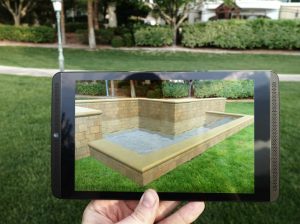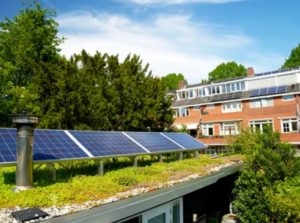The landscape industry has long been associated with manual labour, creativity, and a deep connection to nature. However, in the 21st century, the sector is experiencing a revolutionary transformation driven by innovative technologies. These advancements, from landscape design to maintenance and sustainability, reshape the industry’s trajectory toward smart growth. In this blog, we will explore various aspects of the landscape industry and delve into concrete examples of how technology is making a significant impact.

1. Landscape Design: Embracing Virtual Reality and Augmented Reality
Traditionally, landscape design involves sketching on paper and translating those ideas into physical spaces. Today, virtual reality (VR) and augmented reality (AR) technologies are changing the game. Landscape architects and designers can now create immersive, three-dimensional designs that allow clients to virtually walk through their planned outdoor spaces before any physical work begins.
For instance, companies like iScape and PRO Landscape offer AR mobile apps to overlay digital landscape designs onto real-world spaces. This enhances the client’s understanding of the proposed design and streamlines communication between designers and clients, reducing the chances of misunderstandings and ensuring the final result meets the client’s expectations.

2. Smart Maintenance: Robotics and Drones Take Center Stage
Maintaining a lush, healthy landscape requires consistent care and attention. Robotics and drones are playing a vital role in optimizing maintenance tasks. Robotic lawnmowers, such as those produced by Husqvarna, autonomously navigate lawns, cutting grass with precision and efficiency. These machines save time and reduce the need for human labour, particularly in large commercial landscapes.
Drones, equipped with advanced cameras and sensors, are being used for aerial surveys and inspections. Landscapers can assess the health of plants, identify potential issues, and even monitor irrigation systems from a bird’s-eye view. This data-driven approach enables more proactive and targeted maintenance, ultimately leading to healthier landscapes.

3. Sustainable Landscaping: IoT and Water Management
In an era where environmental sustainability is a top priority, technology is helping the landscape industry reduce its ecological footprint. The Internet of Things (IoT) is being leveraged to create smart irrigation systems that monitor real-time weather conditions, soil moisture levels, and plant water needs. Companies like Rachio and Rain Bird offer smart controllers that adjust watering schedules based on environmental factors, leading to significant water savings.
Furthermore, sensor technologies are being integrated into landscapes to collect data on soil quality, temperature, and sunlight exposure. This information allows for precise planting and maintenance decisions, contributing to developing resilient and sustainable green spaces.

4. Green Roof Technology: Enhancing Urban Landscapes
As urbanization continues to rise, green roofs are gaining momentum. Green roofs involve:
- Growing vegetation on building rooftops.
- Providing numerous environmental benefits, such as improved air quality.
- Energy efficiency.
- Stormwater management.
Technology is being employed in various ways to optimize the success of green roofs.
Innovative irrigation systems, often utilizing sensors and smart controllers, ensure that green roofs receive the right amount of water. Additionally, lightweight and durable materials, such as soil substitutes and modular planting systems, make it easier to create green roofs without compromising structural integrity. Integrating these technologies contributes to developing more sustainable and resilient urban landscapes.
5. Collaborative Platforms: Connecting Professionals and Clients
The landscape industry also benefits from collaborative platforms connecting professionals, clients, and suppliers. Apps like Land8 and Houzz bring together landscape architects, designers, and clients in a virtual space where ideas can be shared, designs can be discussed, and professionals can showcase their portfolios.
These platforms facilitate collaboration and serve as valuable resources for staying updated on industry trends, accessing design inspiration, and discovering new products. As the landscape industry becomes increasingly interconnected, these collaborative platforms play a crucial role in fostering innovation and driving the industry forward.
The landscape industry is undergoing a profound transformation fueled by innovative technologies. From revolutionizing the design process with virtual and augmented reality to enhancing maintenance through robotics and drones, these advancements drive the industry toward smart and sustainable growth. As technology evolves, the landscape industry will likely see even more groundbreaking innovations that contribute to creating beautiful, functional, and environmentally conscious outdoor spaces. By embracing these technological advancements, landscape professionals can streamline their processes and contribute to the broader goal of creating a greener and more sustainable world.